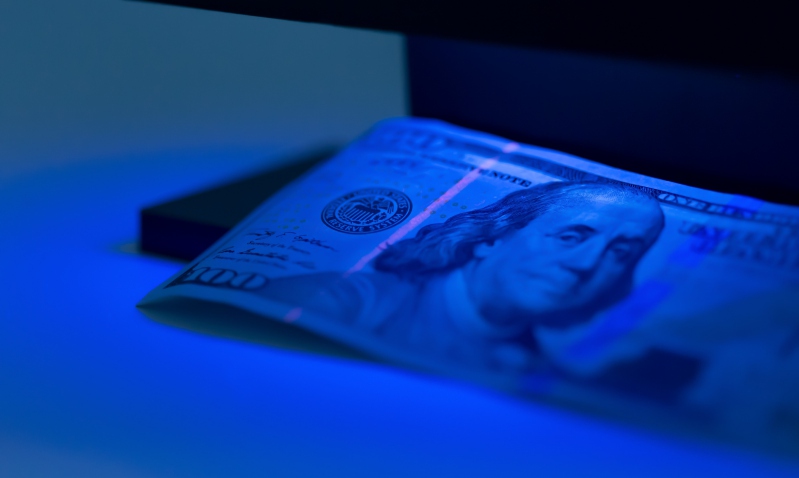
Experts explore regulatory approaches to detect and decrease the online sale of counterfeit goods.
Canal Street in New York City, notorious for the exchange of counterfeit goods, lies at the top of the list of places subject to police raids. Sellers in the area boast fake versions of high-end designer products, including purses, perfumes, and watches. Although Canal Street vendors are still arrested for counterfeiting, in recent years consumers more frequently buy counterfeit goods on the internet.
Counterfeiting is the practice of manufacturing and exchanging products that are branded to appear like their authentic counterparts but are not genuine. The scope of counterfeit goods goes far beyond luxury items to include products from multiple industries. E-commerce, meaning commercial transactions that take place online, has only increased the diversity of platforms accessible to counterfeiters.
Governmental authorities argue that counterfeits, as objects intended to deceive consumers, present several risks of harm to individual customers and the collective economic system. In an e-commerce environment, the risks of counterfeiting brands are especially high. In 2017, for example, Nike withdrew its products from Amazon in part because Amazon houses third-party vendors that sell counterfeit Nike products to consumers.
Counterfeiting not only harms the producers of the items being counterfeited, it also harms the broader public. For example, counterfeit items can be dangerous. Pharmaceuticals, which could contain the wrong dosages or incorrect ingredients, may become one of the most counterfeited goods in the United States.
Counterfeit goods also pose a risk to the financial success and innovation of honest businesses. Consumer trust in brand authenticity and the health of the global economy are put at risk. And workers may be subject to devastating working conditions to produce counterfeit goods.
In the United States, multiple federal bodies develop and enforce e-commerce counterfeit goods regulations. These include the U.S. Consumer Product Safety Commission, the U.S. Food and Drug Administration, the Office of Intellectual Property Rights, the Federal Bureau of Investigation, U.S. Customs and Border Protection, and the National Intellectual Property Rights Coordination Center.
In 2020, the Trump Administration issued an executive order to renew efforts to combat the e-commerce counterfeit goods market. At the same time, U.S. Representative Jerry Nadler (D-N.Y.) introduced the SHOP SAFE Act of 2020, which would put the onus of combating counterfeiting on third-party e-commerce platforms by making them liable for any consequences of counterfeit sales. Government officials also suggest that private actors, such as online retailers and consumers, conduct their own initiatives to eliminate the ever-developing counterfeit threat.
This week’s Saturday Seminar focuses on approaches to banning counterfeit goods in the age of e-commerce in the United States and beyond.
- In an article for European Politics and Society, Benjamin Farrand of University of Warwick School of Law describes the European Union’s efforts to stop the digital distribution of counterfeit goods. The European Union developed the Observatory on Infringements of Intellectual Property Rights, which shares data on best practices for combating counterfeiting and provides actors in the private sector with tools to take on the problem of online counterfeiting themselves. Farrand concludes that the EU has been successful in promoting enforcement because of its focus on facilitating coordination and information exchange between public and private actors.
- In an article for Historical Social Research, Francis Chateauraynaud of France’s School of Advanced Studies in Social Sciences and economics researcher Christian Bessy discuss the correlation between the rise of counterfeit goods online and the increase in opportunities for the market of authentication, including an expansion of legal activity. Bessy and Chateauraynaud raise the issue of regulating authentication servicers, who function as the intermediaries for the digital exchange of goods. In particular, Bessy and Chateauraynaud advocate “state-of-the-art technologies, experimental protocols, and legal rules” in the regulatory authentication framework to address the challenges of a virtual world.
- In an article published in the European Intellectual Property Review, Qingxiu Bu of the University of Sussex explains how current global governance efforts are inadequate to address the proliferation of transnational counterfeit crimes. For example, Bu explains how two recent cases in transnational counterfeiting, Tiffany v. Qi Andrew and Gucci America v. Weixing Li, demonstrate the need for a clear answer for personal jurisdiction and discovery issues in transnational trademark infringement cases. In both Tiffany and Gucci, the plaintiffs issued subpoenas to the Bank of China for discovery related to alleged counterfeiting. In Tiffany, the bank was not required to produce documents, whereas in Gucci the Bank of China was required to produce discoverable records. Bu argues that the resolution of these inconsistencies, coupled with increased international cooperation, may help better protect consumers from counterfeits.
- In an article in the University of California Davis Business Law Journal, John H. Zacharia of George Washington University Law School and Kari Kammel of Michigan State University College of Law recommend ways that members of Congress can consolidate three proposed bills to prevent online sales of counterfeits. To encourage e-commerce platforms to detect counterfeits proactively, Zacharia and Kammel propose that platforms undertake due diligence before permitting third-party sellers to list goods on their sites. To simplify compliance requirements, Zacharia and Kammel suggest requiring the same verification and due diligence measures for all goods and sellers rather than setting different requirements based on the type of good or seller.
- Professor Mark P. Mckenna of the UCLA School of Law argues in an article published in the Akron Law Review that lawmakers should exercise caution when they pass laws with “extreme, but supposedly narrowly-tailored, sanctions” such as in the federal Trademark Counterfeiting Act (TCA). The TCA is the primary authority for criminal trademark enforcement in the United States, enacted by Congress to deter counterfeiters. McKenna explains how the scope of the TCA has broadened over time. He warns that the expansion of criminal liability for counterfeiters may undermine the purpose of trademark law and result in over-deterrence.
- Current laws for protecting consumers and trademark owners fail because legislators crafted them for a brick-and-mortar environment, suggests Kari Kammel of Michigan State University College of Law and her coauthors in a recent article. Bad actors often take advantage of e-commerce platforms to sell counterfeit products, so liability must “shift appropriately with the shift in technology,” argue Kammel and her coauthors. Although platforms may not have direct liability because they are not trafficking counterfeit products or infringing on trademarks, platforms can invite secondary liability if they fail to monitor vendors who sell counterfeit goods, Kammel and her coauthors argue.
The Saturday Seminar is a weekly feature that aims to put into written form the kind of content that would be conveyed in a live seminar involving regulatory experts. Each week, The Regulatory Review publishes a brief overview of a selected regulatory topic and then distills recent research and scholarly writing on that topic.



